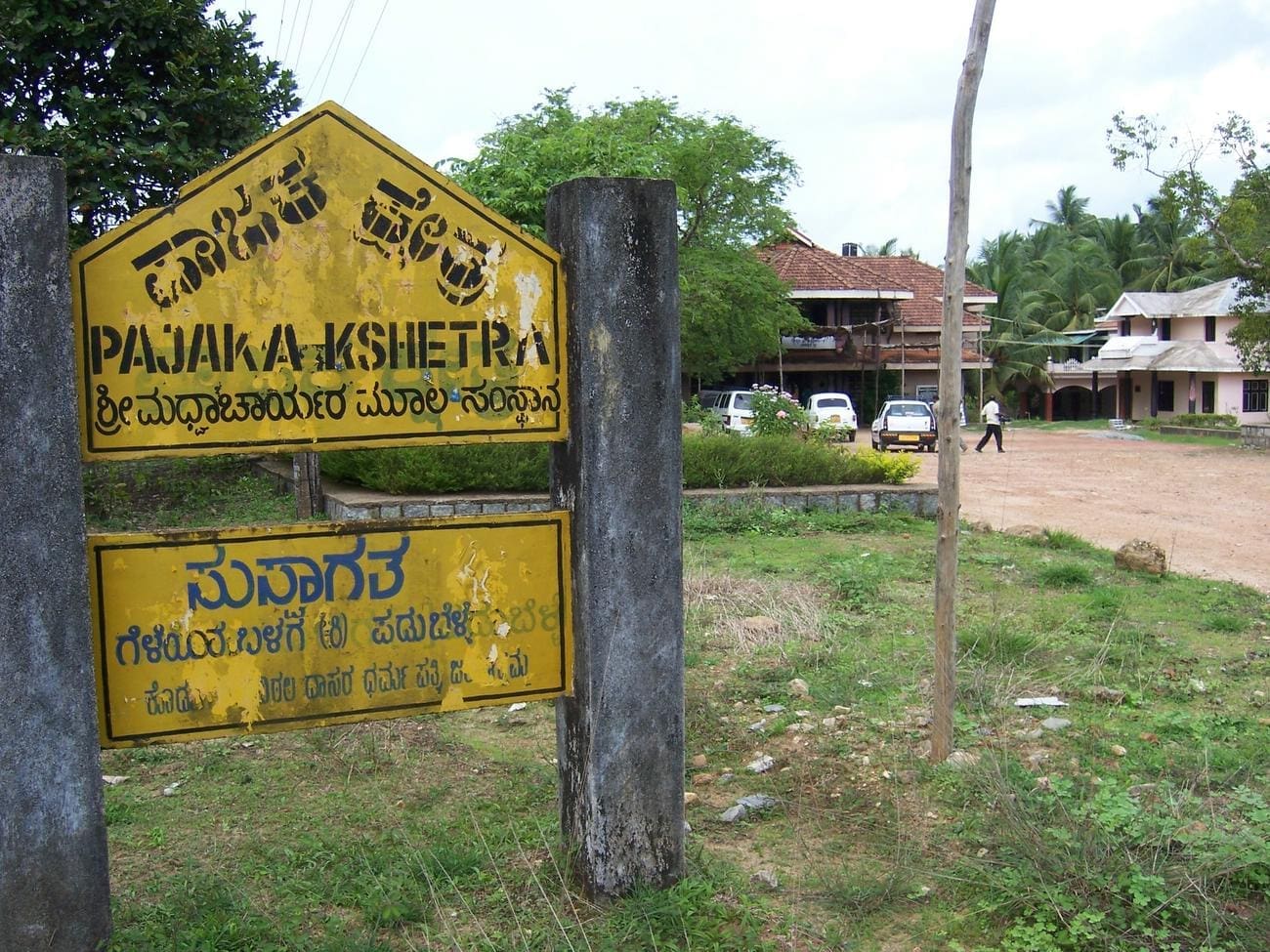
Pajaka Kshetra. Nestled in a green world away from the hustle and bustle of the city. The air is fragrant with the scents of spirituality. A village 13 kms from the temple town of Udupi it is the birthplace of the great saint Madhwacharya (1238-1317 AD), the exponent of Dwaita Vedanta or philosophy.

Serene setting
Pajaka Kshetra is situated in the foothills of Kunjarugiri. Madhwa’s house stands in the east of Kunjarugiri Hill. Today it is a scared spot, sanctified by a shrine dedicated to Madhwacharya. On this hill is situated an ancient temple dedicated to Goddess Durga, the diety who was reverred by Madhwa’s parents.One of the holy tanks created by Parashurama is situated close by into which flows the Dhanush Theertha, Gadatheertha, BanaTheertha and Parashurama Theertha. Opposite the Durga Temple is the Parashurama Betta holds a temple dedicated to Parashurama.

The quiet village of Pajaka has a mythical air surrounding it. Overlooking the Arabian Sea on the west the evening rays of the Sun drench this sacred place. Of the three great Indian thinkers, Shankaracharya, Madhwacharya and Ramanuja, Madhwacharya has left back bundle of evidence of his existence. First and foremost is Udupi, the abode of Sri Krishna Temple and the Ashta Mathas a renowned centre of religion and philosophy in Karnataka. Sri Madhwacharya established both in the 13th century.
The relics that adorn Pajaka include an impression of Madhwa’s feet, a stone he used to write on and a banyan tree he planted.
Looking back
Madhwacharya was born as a fulfillment of the prayers offered by his parents, the Nadillayas at the Anantheshwara Temple after 12 years of austerity. The temple is also the resort of Achutha Prajna who initiated Madhwacharya into the ascetic order of Ekanti Vaishnavas in his sixteenth year.
As a mendicant he traversed the length and breadth of the country spreading the essence of Dwaita philosophy. Badrinath is said to be his favourite place in the Himalayas where his meeting with Sage Vedavyasa and received inspiration to write commentaries on Brahmasutras. His commentaries on various aspects seemed to have caused a fresh upsurge of spirituality and devotion all over the country.
He then disappeared from human sight in his 79th year while delivering a discourse on Aitareya, his favourite Upanishad at a particular spot in this place and since then Pajaka is believed to carry the invisible presence of the Acharya.

Be the first to comment